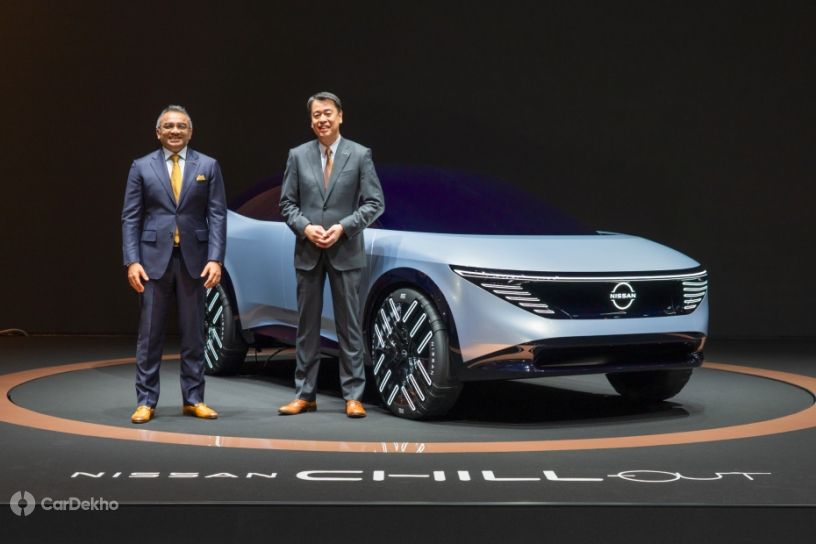5 Key Takeaways From Nissan’s New Electrification Strategy
Modified On Nov 30, 2021 09:53 AM By Sonny
- Write a comment
Many new EVs and hybrids will be launched, along with new and more affordable battery technology

Nissan has revealed its new long-term global electrification strategy and it’s called Nissan Ambition 2030. It covers the Japanese carmaker’s plans from now until the end of fiscal year 2030 (i.e. March 31, 2031). Here are our top takeaways from Nissan’s plans:
23 new electrified models
Nissan wants more than 50 percent of its global lineup to offer electrification including its more premium range under the Infiniti brand. It will be introducing 23 new electrified models, including 15 new EVs. The Ariya electric SUV will likely be the first of these all-new EVs. The eight other electrified models will likely boast Nissan’s e-Power hybrid technology.
Quartet of new electric concepts
No big announcement about future mobility is complete without some concept vehicles and Nissan unveiled four of those on this occasion:
-
Chill-Out: An electric crossover concept based on the CMF-EV platform with Nissan’s electric all-wheel drive technology known as e-4orce. It could preview the replacement for the Nissan Leaf EV which has the shape of a large hatchback.


-
Max-Out: A two-seater convertible concept made of ultra-light materials and with a low centre of gravity. It will have a more advanced AWD system and its unique trick is that the passenger seat can flatten into the floor.


-
Surf-Out: A single-cab electric pickup concept to cater to adventurous lifestyles. It has a large cargo space with a variety of power outlets that can be used to run other appliances. The Surf-Out also features rugged off-road characteristics and an advanced version of the e-4orce AWD system.


-
Hang-Out: The exterior design of this hatchback concept looks closest to a production-spec model. It also has a flat floor with swivel seats for a theatre-like seating experience. The Hang-Out boasts of the best version of Nissan’s ProPilot autonomous driving tech and electric AWD. Nissan states the highlight of this concept is its cabin experience and hence has been designed to minimise vibrations and jolts.


Increased investment over next five years
Progression towards new electric mobility technologies requires a lot of funding and Nissan will invest another 2 trillion yen (approximately Rs 1,32,258 crore) over the next five years. This investment is meant to accelerate the rate of tech and the electrification of its lineup. The carmaker will also invest up to 20 billion yen (approx Rs 1,322 crore) towards charging infrastructure by 2026.
It’s not just about putting money in, but also making it back. During a similar time interval, i.e., by fiscal year 2026, Nissan hopes to achieve the following share of sales in major markets from its 20 new electrified models:
-
75 percent in Europe
-
55 percent in Japan
-
40 percent in China
For the USA, Nissan is hoping to achieve 40 percent of its sales from EVs alone.

Related: Nissan To Launch Hybrids And Electric Vehicles In India, Africa And Middle East
Reduce cost of battery packs and EVs by 2028
Nissan will continue to develop its lithium-ion battery technology and aims to bring down the cost by 65 percent by fiscal year 2028 with the introduction of cobalt-free technology. The brand also aims to launch an EV with its all-solid-state batteries (ASSB) during the end of the same time interval. The ASSB can bring down the recharge times to one-third of the current batteries and will also help reduce the cost of battery packs to around US $75 (Rs 5630) per kWh. As a result, EVs would not only become more practical but also more accessible.

In terms of battery production capacity, Nissan wants to establish a global supply system by increasing it to 52GWh by fiscal year 2026, and 130GWh by fiscal year 2030. It’ll be working towards this goal with its various partners.
LIDAR on every new model by fiscal year 2030
The Nissan ProPilot technology suite of driver assist systems will be offered across more of the carmaker’s global lineup in the coming years. Its autonomous driving technologies will also be developed further, especially for electrified offerings. Nissan also aims to incorporate next-gen LIDAR systems on every new model by fiscal year 2030. That doesn’t necessarily mean they’ll all be capable of fully-autonomous driving but offer some essential ADAS features such as automatic emergency braking, lane keeping assist and adaptive cruise control.
Also read: What Is ADAS? How Does It Help? And What Are The Challenges It Faces In India?
There will likely be more updates and details from Nissan Ambition 2030 over time, so stay tuned to CarDekho for the latest information.
2 out of 2 found this helpful















